A few months ago, Koichi brought some art into the Tofugu office. In total we have three large and three small prints. All six pieces are by Japanese artist Naoshi, who has been creating art using the Japanese technique sunae ( 砂絵) since 2004. sunae literally means "sand picture" and involves the tedious process of making images with colored sand. And let me just say, the results are worth it.
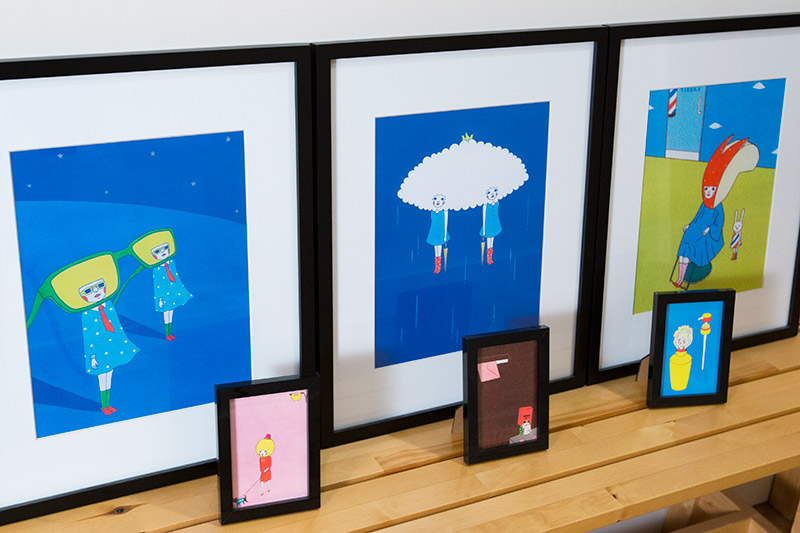
While we were still deciding where to hang them, a package arrived in the mail. It was a promotional copy of Naoshi's first book, Ice Cream Work. The publicity company who sent us the book must have known we'd become recent collectors! Or maybe it was coincidence. Or fate? Either way, I was excited to crack it open and see what surprises Naoshi had in store.
The Art of Ice Cream Work
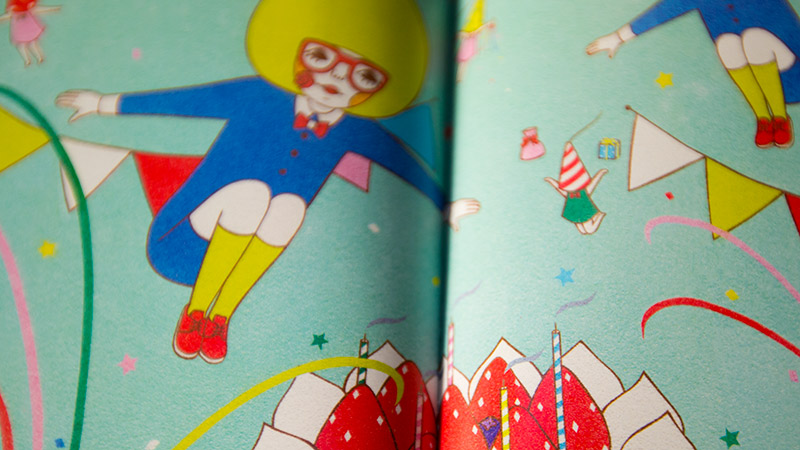
Ice Cream Work is an art book disguised as a storybook. It's a "come for the art, stay for the art" kind of deal.
The textured color of the sunae is held together with beautiful linework and color design. There's a lot of skill packed into the images. The lines are round and safe and soft, while the characters' poses are stiff, and almost doll-like. I was surprised the actual pages weren't as soft as the pictures made them look. (And I caught Kristen touching the pages to see if they were textured.)
The backgrounds are a bit surreal, not in cartoony way, but they aren't completely realistic either. They straddle that line. This lets the characters pop in and out of the book's locales without anything feeling out of place. It helps you feel like life can be fantastic, as Naoshi suggests.
The use of the sunae technique isn't immediately apparent. Even though I was exposed to the Naoshi art prints in our office for a few weeks, I had no idea they were made with colored sand. I just thought they were fuzzy looking. But it's that fuzzy feeling that sets Naoshi's work apart. Those busy little grains blend so perfectly with the images that the colors really pop.
Because all of Naoshi's work is done in sunae, there's a section in the back of the book describing the process and inviting you to try it for yourself. But as simple as the explanation makes it sound, it looks a lot harder:

Naoshi's work is attractive because it's deceptively simple looking. It gives you the "I can do that!" feeling. But it actually takes a lot of skill, which is the most important aspect of her art, in my opinion. It's inspirational. It's the kind of art that makes you want to grab a sunae board and start creating! And that's what the best kind of art does.
The Story and the Experience
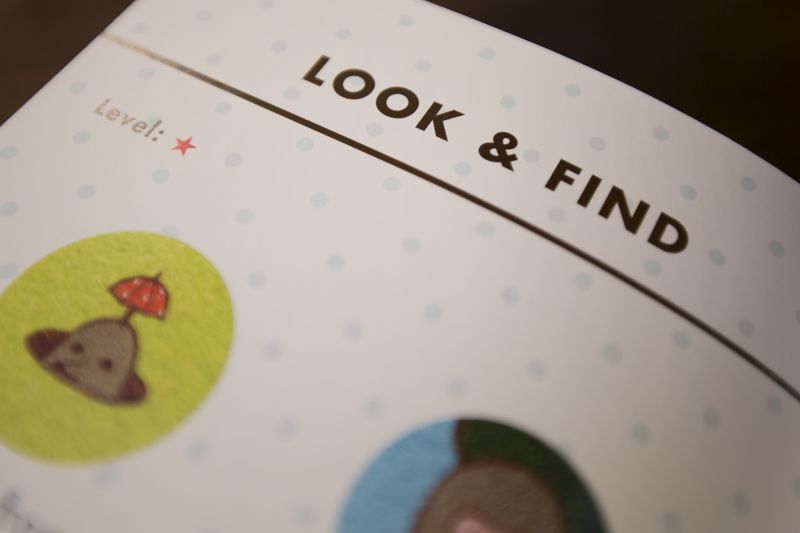
Ice Cream Work has a story that is less a narrative and more an experience. Still I'll attempt to break it down the best I can.
The main character, Ice Cream Man, gets up and goes to work every day. Each day Ice Cream Man performs a new task. The text in this story is sparse, consisting mostly of bulleted lists that explain the job title, location, hours qualifications, and payment of each job. At the end of the week, Ice Cream Man goes home.
Trying to ground Ice Cream Work in logic misses the point. This is an art book first and a storybook second. You could call it, "an art book that happens to have a short story." The idea is to give the reader an experience, not to affect them through narrative.
This experience doesn't end when you finish reading the story though. Or at least Naoshi doesn't want it to. In the "Look & Find" section you're told to go back and search for certain things in the story. You also get a taste of Naoshi's subtly hyperbolic sense of humor. The difficulty of each thing to find jumps from 1 star to 2 stars to 3 stars to 10 stars, showing us that none of it should be taken seriously. On top of that, the objects in "Look & Find" aren't difficult to find or even hidden. Take that, Where's Waldo!
This is what convinced me the book is for adults. Children don't really need a "Look & Find" section to encourage them to go back and look at colorful pictures. And the overt "hidden" objects suggest she's not asking you to play a game, but rather go back and spend more time with her work.
As adults we tend to consume. And this book can be "read" in a matter of minutes. But in Ice Cream Work Naoshi invites you to participate in the art. That's where the true storytelling happens. When you take time to sip instead of gulp.
Physical Aspects of Ice Cream Work

The cover design uses an image from the book. Without knowing what the book was about, I was immediately curious. The title and image raise questions, like, why is an ice cream person riding around inside an ice cream cone? Isn't that a little messed up?
The cover feels smooth, like a solid silk. This softness runs contrary to the visual roughness of the images. The low page count makes it lightweight, ideal for train rides and on-the-go reading. But even though it's portable, its visual nature makes me want to keep it in one place to preserve its condition. Maybe that's the collector in me.
The paper inside is glossy. It's a sweet feeling that matches the sweetness of the story and pictures. Naoshi's art revolves around the sand medium. High resolution is necessary to preserve the art's texture. Thankfully the publisher, Overcup Press, achieved this with high quality printing.
My only complaint is with the binding. The pictures get cut in half because they're spread across two pages. Having a fold down the center of the art is distracting. I'm not sure how this could have been avoided. It's the nature of books being books. After a while I stopped noticing the dividing line as I became more absorbed into the experience, but it was an initial annoyance.
Learning Things You Forgot How to Do
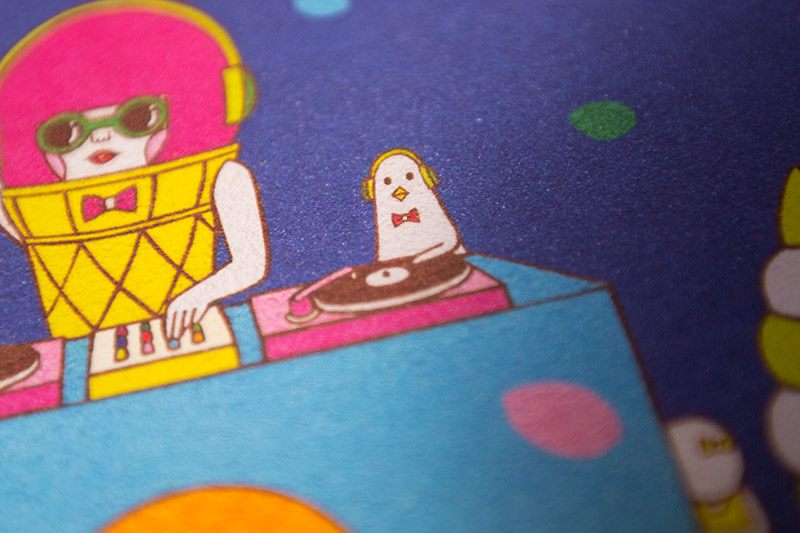
Ice Cream Work is certainly open to interpretation. For me, it's more about how we perceive the world around us. I think there is significance in the way Naoshi presents each work day twice. Before the "work day" pages wherein you see Ice Cream Man performing his duties, you get the very same scene without Ice Cream Man.
First without Ice Cream Man:
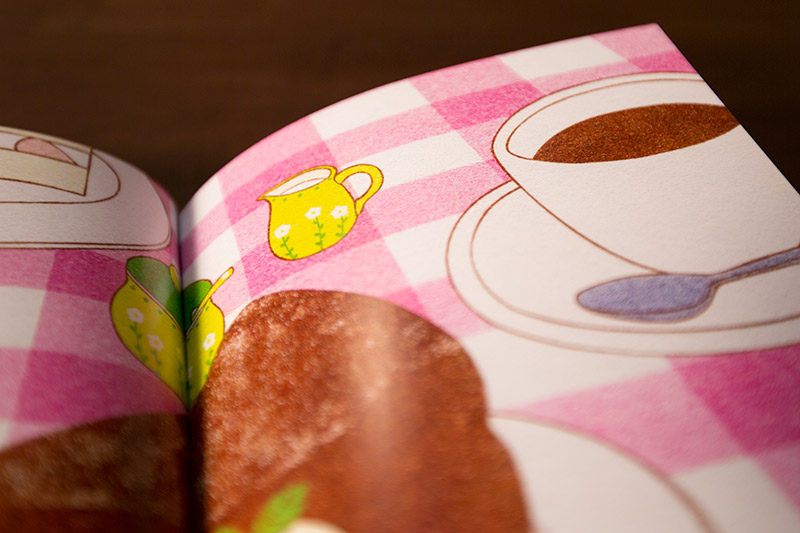
Then with Ice Cream Man:
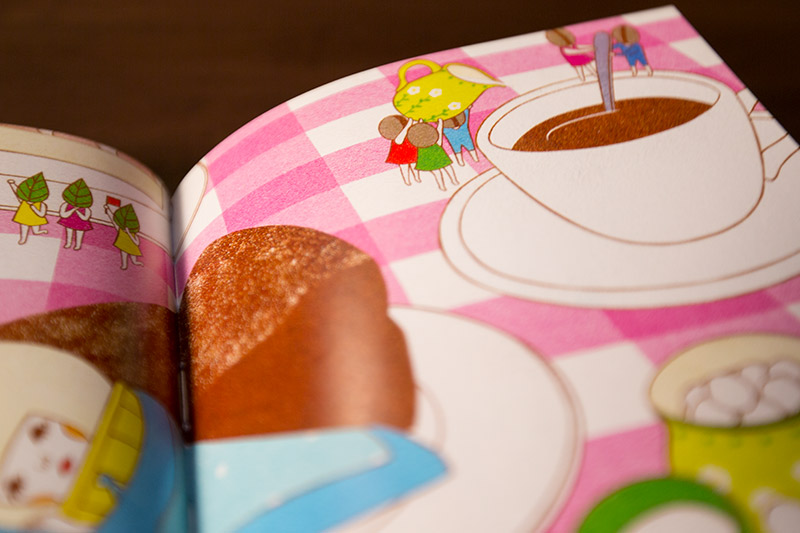
The first image is rendered realistically. It could be any dessert-laden table. But when Ice Cream Man arrives, the scene comes to life. He's not just bringing his work ethic, he's bringing extra characters and activity. There are groups of lemon, herb, and coffee bean people, all engaged in various activities with various motives.
This suggests Ice Cream Man is transforming the scene with his presence. So maybe, the book is an exercise in looking at mundane things differently.
Maybe the idea of seeing little people all around us seems absurd to you. But not when you were younger, right? Why did we stop doing it? Ice Cream Work may be a call for us to enrich our adult lives with things we've forgotten how to do, things we've abandoned because of fear or distractions.
About Naoshi
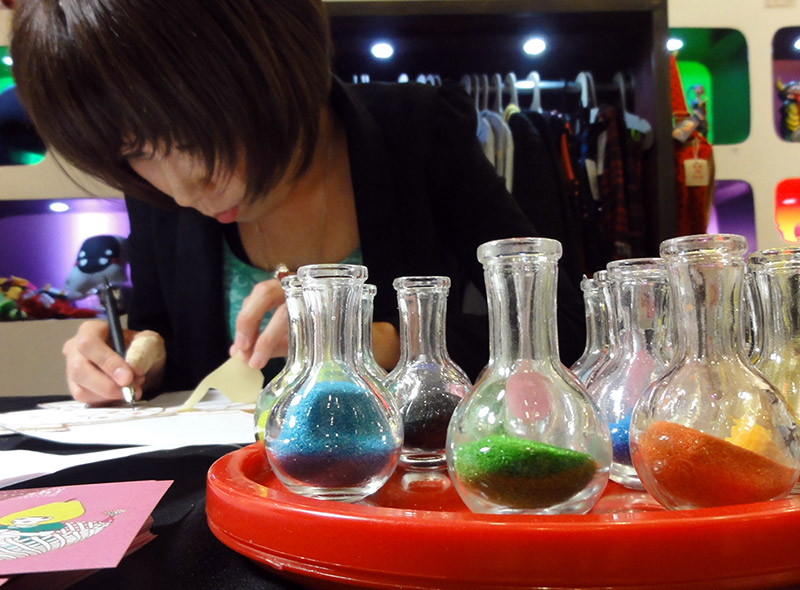
Naoshi is from Iwate, Japan. She started making art in 2004 while working an office job. She wanted to express the joy, concern, and stress she experienced. So she began creating images that express these emotions, and chose sunae as her medium.
In 2007, she started showing her sunae around the world. She has presented at shows and art expos in Taiwan, Italy, China, Germany, Switzerland, South Korea, France, and the United States. She was introduced to American audiences by Hellion Gallery's Matt Wagner, who featured her in his book The Tall Trees of Tokyo in 2013. After that she moved to Los Angeles.
Naoshi got the idea for Ice Cream Work after discovering a drawing she did when she was seven years old. The drawing was titled あいすがあるいた (The Ice Cream Walked). She decided to develop the character her younger self had created. This idea grew and changed until it evolved into Ice Cream Work.
Naoshi says the biggest influence on her work is Kin Shiotani, who she met in 2004, the same year started making sunae art.
One More Time
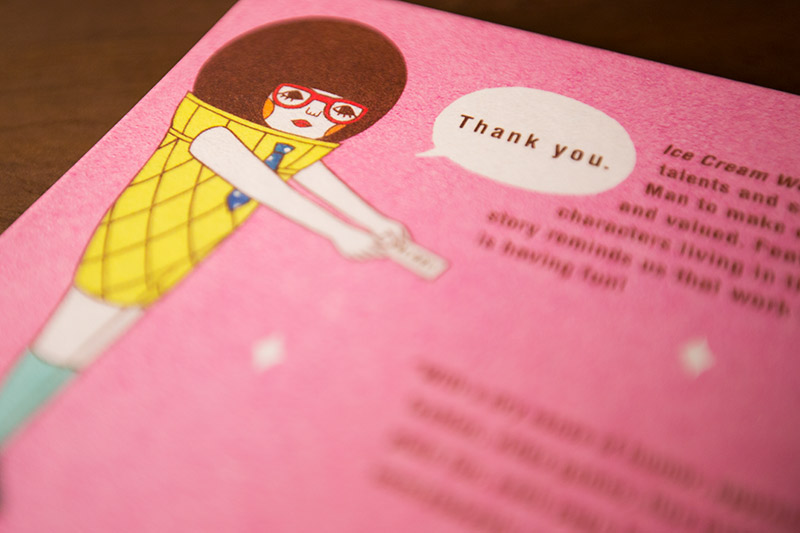
Ice Cream Work invites participation. As a child, you don't need to be coaxed into spending extra time poring over each line. But as adults, if something isn't immediately useful or consumable, we move on. That's why the "Look & Find" section is so important. It's not for kids. It's for adults. It pokes you saying, "Did you go through the book too fast? Why not go through it again?"
You get the most from Ice Cream Work when you spend time with it. As an adult, it's easy to flip through in a matter of minutes. Done. Book consumed. But the lack of words and overt storytelling invite you to slow down and sip. Stop on each page. Look around. Then do it one more time.
Koichi’s Review
If I had a kid, I’d get them this book and tell them about the world of ice cream people. I enjoyed the art a lot, and am a fan of this artist.
Michael’s Review
This is a great book by a great artist, but unfortunately, the texture of her medium (sand) gets lost in the printing. That’s just how it goes. Thankfully, the cute story and characters make up for it.
